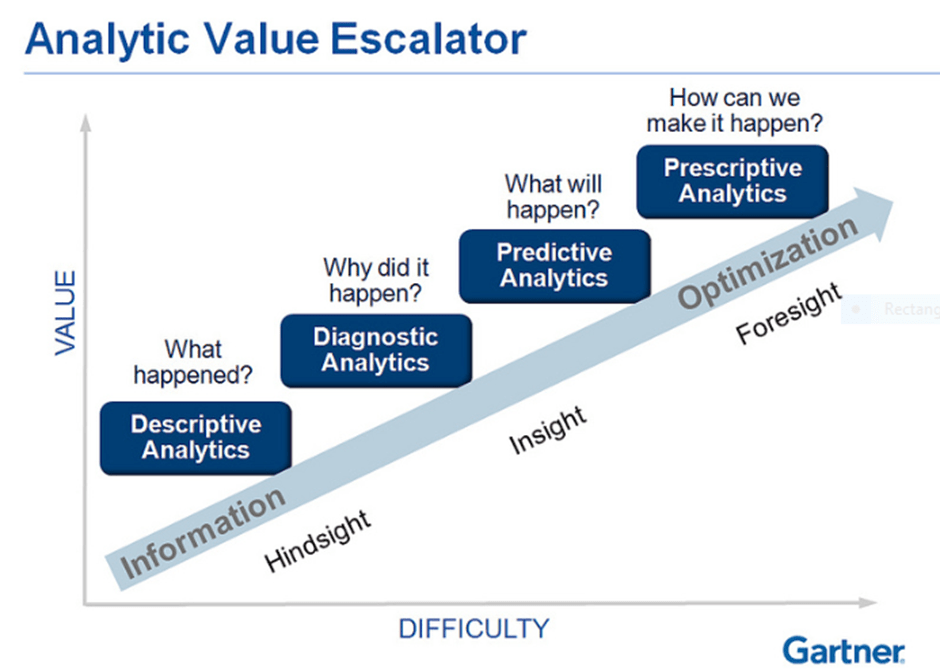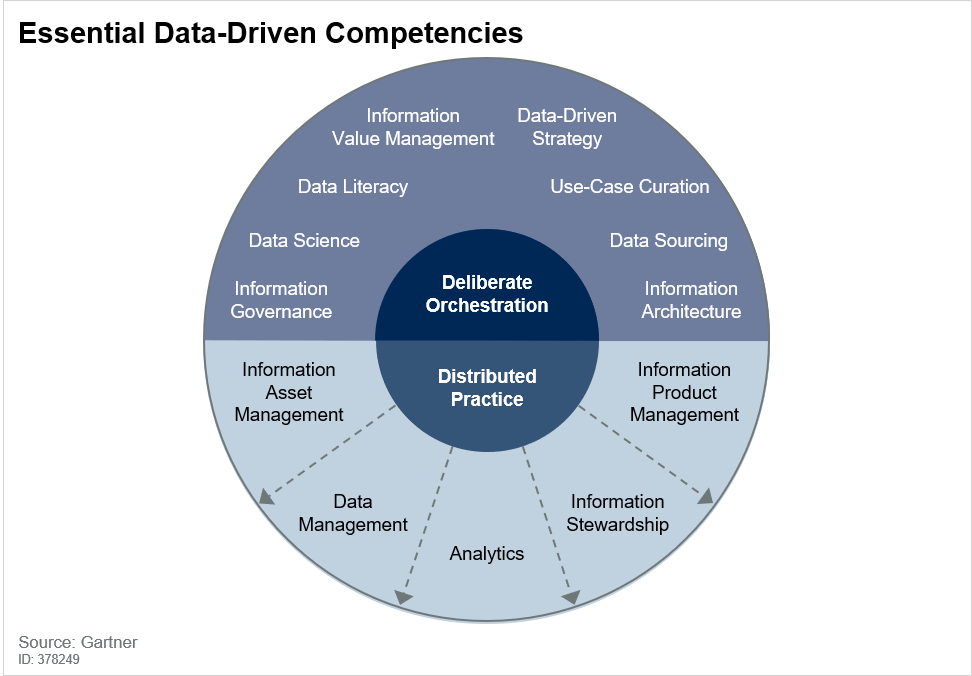How to Build A Data Culture – And Why It Matters
By now, your organisation is probably generating and gathering more data than you know what to do with.
We’re sure that your business is contending with customer data, productivity data, cost data, revenue data… the list is virtually endless. But don’t worry – you’re not alone!
Without a data-driven culture to support it with real-time dashboards, visualisations, data and predictive analytics, and insights, you could be left with critical business decisions that lack credibility and may well impose extensive costs.
And, without an infrastructure for storing and analysing that data, most of your information will be lost in the abyss. A proper infrastructure will provide that essential “single version of the truth” that underpins effective decision making.
Why is Data Culture So Important?
Ultimately, getting your organisation to use data correctly requires a shift in attitudes, which means developing a data culture from the top down. Using data effectively across an organisation starts with clear internal direction from directors and leaders to embed a culture of integrity and ethical behaviour. This way of working and making decisions needs to become routine practise for everyone involved.
Read on to find out how to build and develop a data culture, from the experts here at Objective IT.
Great data is necessary… and is possible
Creating the most informed strategy, asking the right questions, and backing up your thoughts depends on having the right tools and talent in place to ensure data accuracy and literacy.
When you lack standards and protocol for analysing data, you’ll be left with unreliable and potentially inaccurate insights that materialise due to the misuse or limited use of data. A common example of mis-using data is cherry-picking, which means presenting data that backs up your claim or agenda while disregarding data that doesn’t.
So, how do you find out what you don’t know? Unless data analysis becomes a routine activity, how will you learn about high-potential opportunities or areas that are developing cost issues, which impact profit?
The answer to such scenarios and many more which either misuse or don’t use data is creating and developing a data-driven culture.
When everyone in the organisation adheres to a higher standard of data analysis, you can be confident that key decisions are backed by reliable information that is true and not based on assumptions or gut feel.
Your 5 Step Checklist to creating and developing a Data Culture
- Clear internal direction from leaders
- Foster a data driven orientation
- Create a data warehouse – ‘single version of the truth’
- Build a solid team of data scientists
- Ensure data analysis drives decision making
Step 1: Clear internal direction from leaders
Leaders must take the first step to build a data-driven culture. After all, it’s often not technology that holds the deployment of data analysis back it’s the lack of a data-ready culture.
It makes sense that all strategic decisions should be backed with data evidence — this is the best way to know you’re heading in the right direction.
While the process of creating a data-driven culture will be determined by the needs and resources of the organisation, as well as the leader’s own style, businesses that achieve and foster this type of culture often achieve success.
Data also needs to be available. This means quantity and quality, with steps being taken to address and minimise gaps.
When senior executives make data analysis a key part of their decision making, they will set an example that will filter down throughout each subsequent tier of management and among the entire workforce.
Step 2. Foster a data driven orientation
Like any cultural change, a key component of developing a data-driven culture is changing the way people think about data and encouraging company-wide participation.
It’s critical that employees don’t view data analysis as simply another job that they need to perform. Instead, it should be viewed as a key principle of every decision and strategy. When your people see and experience the tangible benefits of using data, it is harder to resist the need for change.
Define needs based on goals. For example: What do I want to do? What is stopping me? Help to enable quick wins for your data culture to develop and gain momentum.
Allow time to test and learn. Rather than only looking for data to answer your questions, it would foster active participation and change mindsets where employees are encouraged to routinely analyse data and then develop questions and observations from it.
3. Create a data warehouse to consolidate data
Creating one central data repository is essential for maintaining and analysing data. Regardless of how many data systems your organisation has, you need to establish a common data language. Your business will need a single view of your operating metrics, typically in the form of a data warehouse, that everyone relies on as the real, trusted numbers.
A data warehouse is not another tool in your toolbox, but rather a foundation for creating data-driven culture in your organisation. Your data warehouse will become the key infrastructure to help ensure consistency in the tracking and consolidation of data.
- It is your single version (source) of the truth. All users get the same results for a single question. Data warehousing eliminates the issue of different stakeholders applying different business rules, and getting different outputs, when processing the data.
- You can self-serve. It delivers insights to the report users in their preferred environment. As data in the data warehouse has already been processed and cleaned this reduces the time for conducting repetitive data tidying tasks.
- Improve performance. Data warehousing reduces the load on production systems. As reporting often requires “expensive” memory operations, it is crucial to ensure those do not affect the availability of any production systems’ collection of operational data.
By keeping all of your data in one place, you’ll be able to eliminate the frustration of identifying dissimilar data and needing to rely on guesses or assumptions to gauge reliability.
4. Build a solid team of data scientists
Whether you do it in-house, outsource to a data analytics company or create a hybrid of internal and external data skill sets, you need a team of experienced, technical people who are well equipped to support a data-driven culture.
Your team of data scientists will have the skills to analyse complex data to support strategic decision making. They will be responsible for building and maintaining the quantity and quality of data in the data warehouse. Their initial focus will be on eliminating data analysis systems that rely solely on Excel spreadsheets and manual calculations, in order to create useful reporting visualisations and dashboards.
By utilising business intelligence platforms such as Microsoft Power BI, data can be explored and interrogated in real time. Your analytics tools can become even more powerful when they’re integrated into your existing processes or systems. For example, you can enhance the productivity of your management meetings by leveraging dashboards as meeting agendas.
As well as the technical work involved, your data science team must be the team of champions that reinforce the data-driven culture. They will have the talent and mindset to provide support to other functions and departments for structuring and understanding data, on top of performing business insights.
Once the data culture is embedded you open a whole raft of potential for data and predictive analytics. See the chart below published by Gartner.
Analytic Value Escalator Chart by Gartner

Depending on the stage of the workflow and the requirement of data analysis, there are four main phases of analytics: descriptive, diagnostic, predictive and prescriptive.
Descriptive analytics explores historical data and analyses past events for insight to better understand the changes that have occurred in the business.
Whereas Diagnostic analytics is distinguished by techniques such as drill-down, data discovery, data mining and correlations to discover why did it happen? These two phases are often combined together.
Predictive analytics tells us what’s likely to happen next, essentially a crystal ball, based on past data and future projections utilising variables and statistical modelling techniques. As the next frontier in addressing the customer experience, predictive analytics can have a huge influence on improving your bottom line, through better conversion rates, reducing customer churn and ultimately extending the customer lifetime value.
Prescriptive analytics is the most advanced and final phase of business analytics. Prescriptive works with both descriptive and predictive analytics results to recommend one or more possible courses of action to achieve a desired outcome. More specifically, prescriptive analytics factors information about possible situations or scenarios, available resources, past performance, and current performance, and suggests a course of action or strategy.
Both predictive and prescriptive analytics uses a combination of techniques and tools such as business rules, algorithms, machine learning and computational modelling procedures. These techniques are applied against input from many different data sets including historical and transactional data, real-time data feeds, and big data.
5. Ensure data analysis drives decision making
Data is a means to an end. The relevance and quality of the data will determine whether it is embraced or not by people within your organisation.
To ensure your data is useful, trusted and protected the data needs to be solidified by communicating strategic alignment with business objectives and implementing levels of data governance, privacy and security.
For corporates a new, and to some extent untested role, is the Chief Data Officer. This individual takes the lead in defining your organisations data-driven ambitions, the data strategy, and the necessary governance changes to achieve these.
According to a Gartner’s most recent Chief Data Officer study the top three business expectations for the data and analytics teams are
- Enhance data quality, reliability and access
- Enhance analytical decision making
- Drive business or product innovation
For small-medium sized companies a data champion may be designated to fulfil this role. Essentially, to lead internal technical teams and coordinate external data analytics consultancies to create business value with data assets.
It’s important to create a data driven business, rather than a data driven department.
For example, business leaders are asking such questions…
“With this data, how could we fundamentally change the value propositions for our customers?”
How can data help us develop and deliver new value propositions?
Envisioning and answering these types of questions requires an expanded set of data and analytics competencies. It is not just the data and analytics department, but the entire organisation that gets involved. Therefore, a range of skills and competencies are needed either within the organisation or from external data analytics consultants.
Essential Data-Driven Competencies Chart

Data Culture Matters
In conclusion… Would you aim to make a strategic decision that isn’t based on data?
Using data to inform decisions not only enhances credibility, but it is also the only way be sure your decision makes sense.
You may also be interested in other blogs in this theme:
What is the impact of poor-quality data?
6 Steps in a Data Analytics project
3 Key aspects to collecting meaningful data for IOT
If you would like to know more about creating a data warehouse or providing data insights for your business, please get in touch.
Reference: 10 Ways CDOs Can Succeed in Forging a Data-Driven Organization, By Mike Rollings, Alan D. Duncan, Valerie Logan published by Gartner, 22 May 2019.